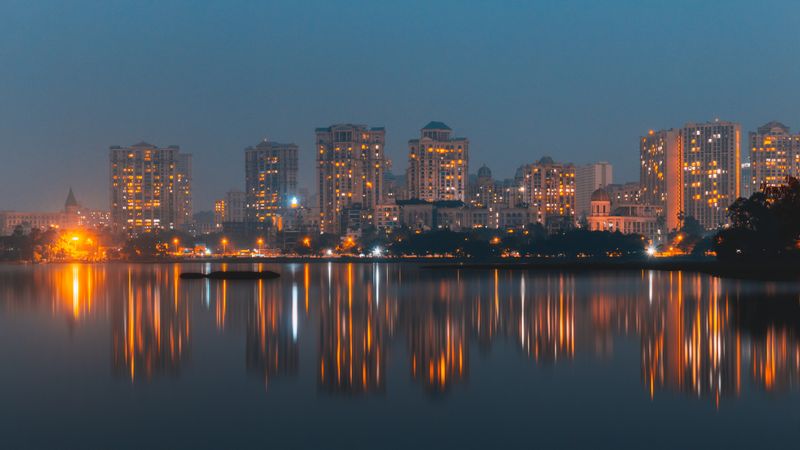The Economics of Extreme Luxury: The Cultural, Economic and Social Implications of the Ambani Wedding
The Rs. 5000 crore wedding of Anant Ambani, the youngest scion of Mukesh Ambani, is a spectacle that lays bare the paradoxes and absurdities of Indian society like few other events can. It’s a stark reminder of the glaring income inequality that permeates the fabric of our nation.
As the average Indian family scrapes and saves, often spending up to 50% of their lifetime earnings on weddings, the Ambanis casually drop 0.1% of their net worth on an extravaganza that could bankroll a small country. Let’s take a closer look at what this obscene display of wealth tells us about the state of our society, our economy, and the disturbingly intertwined nature of money and power in India.
What’s even more troubling is the defense mounted by ordinary people in favor of such extravagant displays. “It’s their money, and if we work hard, we can throw lavish weddings too,” they argue. But let’s debunk this myth with cold, hard numbers about the economic absurdity of this event.
For perspective, the Ambani wedding’s Rs. 5000 crore price tag translates to roughly $600 million. This sum, as jaw-dropping as it is, represents a mere fraction of the Ambani family's staggering wealth, estimated at $90 billion. For context, the average Indian’s per capita income is approximately $2,200 annually.
It would take an average Indian roughly 272,727 years to amass Rs. 5000 crore. The idea that anyone can achieve such wealth through hard work alone is a dangerous and misleading fantasy. It perpetuates the notion that extreme wealth is a reward for merit, ignoring the systemic advantages and exploitative practices that often underpin such fortunes.
The Ambanis, like many billionaires, have not built their empire solely on innovative ideas or generational wealth. Their vast fortunes are often the result of anti-competitive practices, tax dodging facilitated by tax havens, government subsidies funded by taxpayers, and business tactics that stifle competition and harm entire economic sectors. According to the Global Financial Integrity report, India lost $83 billion in illicit financial flows in 2020 alone, highlighting the scale of wealth siphoning from the country.
This brings us to the spectacle itself. The Ambani wedding was not just a private affair but a meticulously orchestrated media circus. Every detail, from the exorbitant costs of the bride and groom's attire to the elaborate decorations, was publicized with a fervor that bordered on the obsessive.
A dedicated PR team ensured that the event dominated social media and mainstream news for weeks. This desperate need for notoriety and publicity underscores a deeper, more unsettling truth about the elite's relationship with society: a blend of arrogant display and insecure desire for validation.
The presence of political heavyweights at the wedding added another layer of intrigue.
From Prime Minister Narendra Modi to a cross-section of politicians like Chandrababu Naidu, Tejaswi Yadav, and Mamata Banerjee, the guest list read like a who's who of Indian politics.
This flagrant conflict of interest, where elected leaders rub shoulders with the ultra-wealthy, exposes the deep ties between money and political power. It’s a stark reminder of how the economic elite can influence policy and governance to their advantage, often at the expense of the average citizen.
Wealth Distribution and Income Inequality in India
India’s income inequality is one of the highest in the world.
According to the World Inequality Report 2022, the top 1% of India's population holds 22% of the total national income, while the bottom 50% accounts for only 13%. This stark disparity highlights the deep structural issues within India's economy.
The economic implications of this kind of wealth concentration are profound. India, a country with stark poverty and glaring disparities, cannot afford to ignore the consequences. The Rs. 5000 crore splurged on this wedding could have been channeled into more productive uses.
How Rs. 5000 Was Spent by the Ambanis
- Pre-Wedding Celebrations:Jamnagar from March 1 to 3: Rs. 1200 crore (The Siasat Daily)
- Venue Costs:Decoration and setup at Antilia: Rs. 100 crore (The Siasat Daily)Jio World Convention Centre booking: Rs. 50 crore (DNA India)
- Catering:Food and beverages: Rs. 200 crore (The Siasat Daily)Special dietary requirements: Rs. 50 crore (DNA India)
- Entertainment:Performances by Bollywood stars, international artists, and other celebrities: Rs. 300 crore (The Siasat Daily)Sound and lighting equipment: Rs. 50 crore (DNA India)
- Transportation:Private jets and helicopters for guests (including Falcon-2000 jets): Rs. 500 crore (DNA India) (Outlook India)Luxury cars and buses for local transportation: Rs. 100 crore (DNA India)
- Wedding Attire:Bride and groom’s outfits by top designers: Rs. 100 crore (DNA India)Outfits for family members and close relatives: Rs. 200 crore (DNA India)
- Jewelry:Bride’s wedding jewelry: Rs. 500 crore (DNA India)Gifts for close family and friends: Rs. 100 crore (The Siasat Daily)
- Accommodation:Booking entire luxury hotels for guests: Rs. 300 crore (DNA India)
- Gifts and Return Gifts:Personalized return gifts for guests: Rs. 100 crore (The Siasat Daily)Gift hampers for family members: Rs. 50 crore (The Siasat Daily)
- Event Management:Wedding planners & Event Coordinators: Rs. 50 crore (DNA India)Security Arrangements: Rs. 50 crore (DNA India)
- Miscellaneous:PR and media coverage: Rs. 100 crore (The Siasat Daily)Floral decorations: Rs. 50 crore (DNA India)Invitation cards and wedding stationery: Rs. 20 crore (DNA India)
Real Economic Impact: What Rs. 5000 Crore Could Do
- MGNREGA Funding: Could support 8.3% of the annual budget, creating millions of jobs.
- Education: Could fund 4.8% of the Ministry of Education's budget, improving literacy and infrastructure.
- Healthcare: Could cover 13.5% of the National Health Mission's budget, boosting public health.
This isn't just about economic theory. It’s about real lives and real opportunities lost. It’s about a society where millions struggle for basic necessities while a few enjoy opulent excesses. It’s about the message we send when we celebrate such wealth disparities instead of questioning them.
The Illusion of Meritocracy
Such displays of wealth also exacerbate feelings of inadequacy and resentment among the less fortunate. They perpetuate a culture of materialism and superficial success, overshadowing values like empathy, community, and collective progress. The need for notoriety among the elite reflects a deeper insecurity – a desire to be seen and admired, masking the vacuity of their pursuits.
According to Oxfam, India's richest 1% own more than 40% of the country's wealth.
This concentration of wealth not only distorts economic policy but also undermines democratic processes by allowing the wealthy disproportionate influence over government decisions.
The myth that extreme wealth is a product of hard work and merit ignores the realities of structural advantages. For instance, Reliance Industries has benefited from significant government support, tax breaks, and regulatory favoritism.
According to a report by the Centre for Research on Multinational Corporations (SOMO), Reliance received subsidies worth Rs. 45,000 crore from the Indian government between 2006 and 2016.
This systemic support skews the playing field, making it nearly impossible for ordinary citizens to compete on equal terms. The Ambanis' wealth is a product of these deep-rooted structural inequities, not sheer merit or hard work.
The Anant Ambani wedding is more than just a lavish affair; it’s a reflection of the stark inequalities that define our society. It’s a reminder of the power dynamics at play and the systemic issues that allow such wealth concentration. Instead of fueling media circuses, we need to reflect on how such resources could be better utilized for the greater good.
This isn't to say billionaires shouldn't enjoy their wealth.
But this blog isn't for the billionaires of India or the world. It's for society at large and the common man. When we see every favorite movie star dancing as extras at a billionaire's wedding, every major singer performing, and mainstream media playing paparazzi, we need to reflect on the state of our economy, democracy, media freedom, and future prospects.
The Ambani wedding, in all its grandeur, is a stark reminder of the imbalances we must address if we are to build a more equitable and just society.







